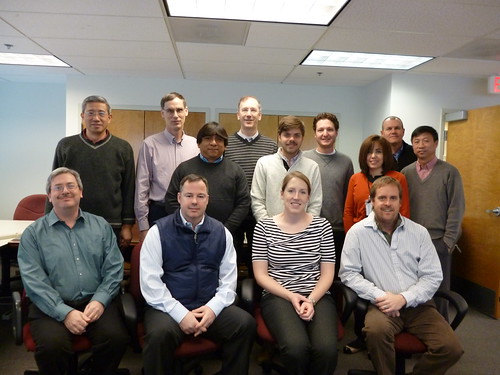This post is part of the Science Tuesday feature series on the USDA blog. Check back each week as we showcase stories and news from the USDA’s rich science and research portfolio.
During the month of April we will take a closer look at USDA’s Groundbreaking Research for a Revitalized Rural America, highlighting ways USDA researchers are improving the lives of Americans in ways you might never imagine.
Over the past several decades, satellite imagery has emerged as one of the most valuable new tools in modern agriculture. At USDA’s National Agricultural Statistics Service (NASS), we strive to remain at the forefront of this technology to continually advance our statistical products in service to U.S. agriculture. To keep abreast of how our counterparts in other countries are implementing this exciting new technology, last month we hosted representatives from the Canadian and Mexican agriculture departments in a Tripartite meeting. As geographic neighbors and statistical collaborators, we are particularly interested in each others' work and how we can learn from each other.
It was exciting to see that Statistics Canada, working with Agriculture and Agri-food Canada, is researching new remote sensing-based yield models, using vegetative indices, agro-climactic data, and survey data for 21 crops. As a result of this innovation, Stats Canada is planning to use only remote sensing to set their official estimates for these crops rather than conducting traditional surveys. This is a tremendous step forward for a statistical estimates program that we will be watching with great interest.
In Mexico, our counterparts at the National Institute of Statistics and Geography conducted a ground survey campaign to identify field crops and performed crop classifications to identify sorghum, maize, and lemons in various parts of Mexico and worked with their NASS and Statistics Canada colleagues to characterize vegetation condition indices. At the same time, our colleagues at the Mexican Agrifood and Fisheries Information Service used Moderate Resolution Imaging Spectroradiometer (MODIS) Normalized Difference Vegetation Index (NDVI) for drought monitoring and are researching vegetation indices and how they relate to yield.
On NASS’ end, we discussed our remote sensing models for corn and soybean yields using NDVI and daytime surface temperatures from MODIS. We also discussed the current and future status of the Landsat program and demonstrated how to access the free data. I presented an overview of the Cropland Data Layer (CDL) and how we continue to evolve and update this program. I have previously discussed in this blog our satellite imagery progress and tools, such as CropScape, which we have developed in partnership with George Mason University. We continue to update that tool and have recently made available 2013 geospatial data for U.S. crops.
Having seen how remote sensing and geospatial programs are implemented by our international neighbors reminded us once again that progress does not stand still. We can learn a great deal from each other. Going forward, we hope to continue to push the boundaries of this technology to enhance our statistics and ensure easy public access to interactive visualizations of U.S. agriculture.

